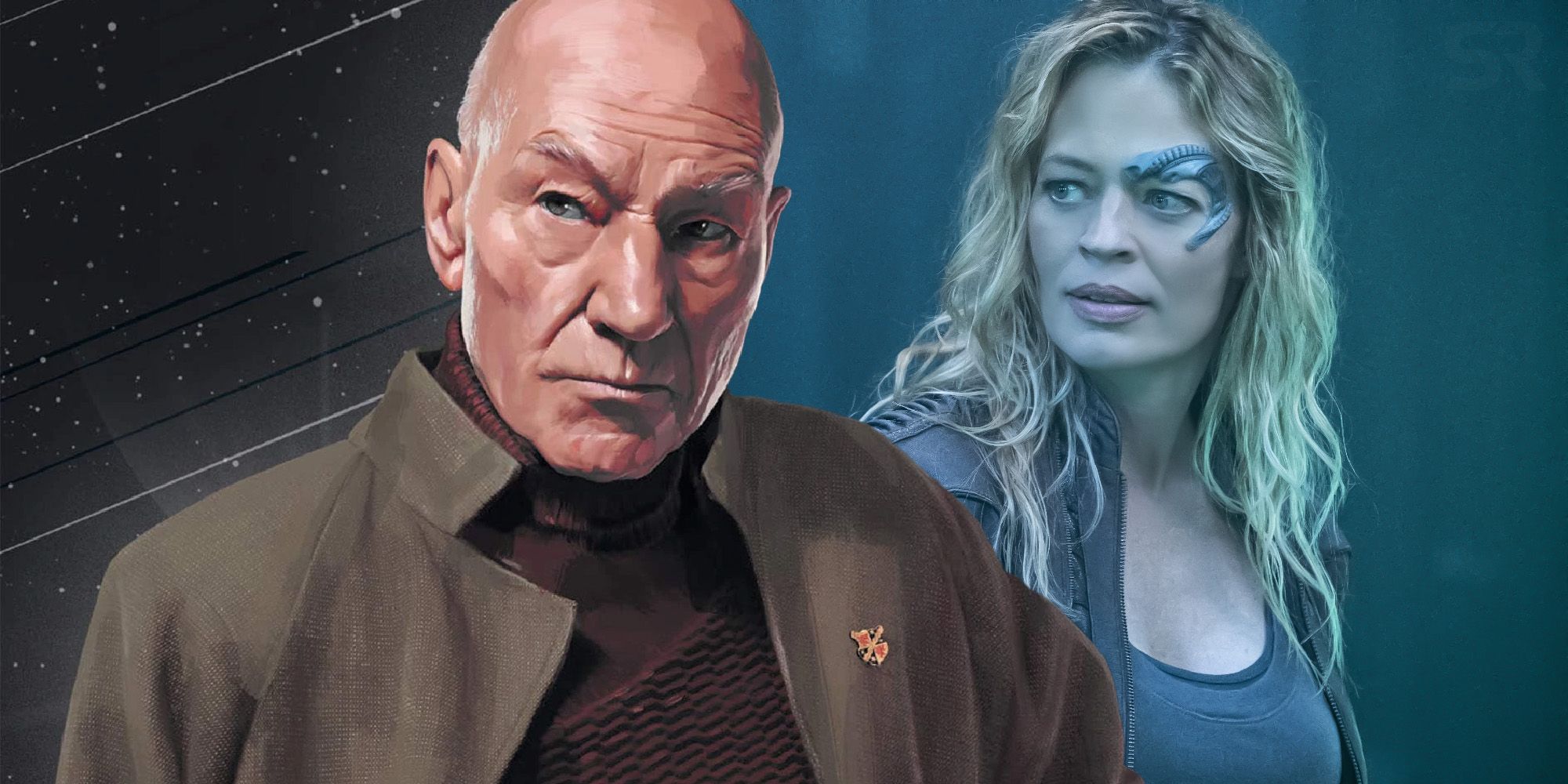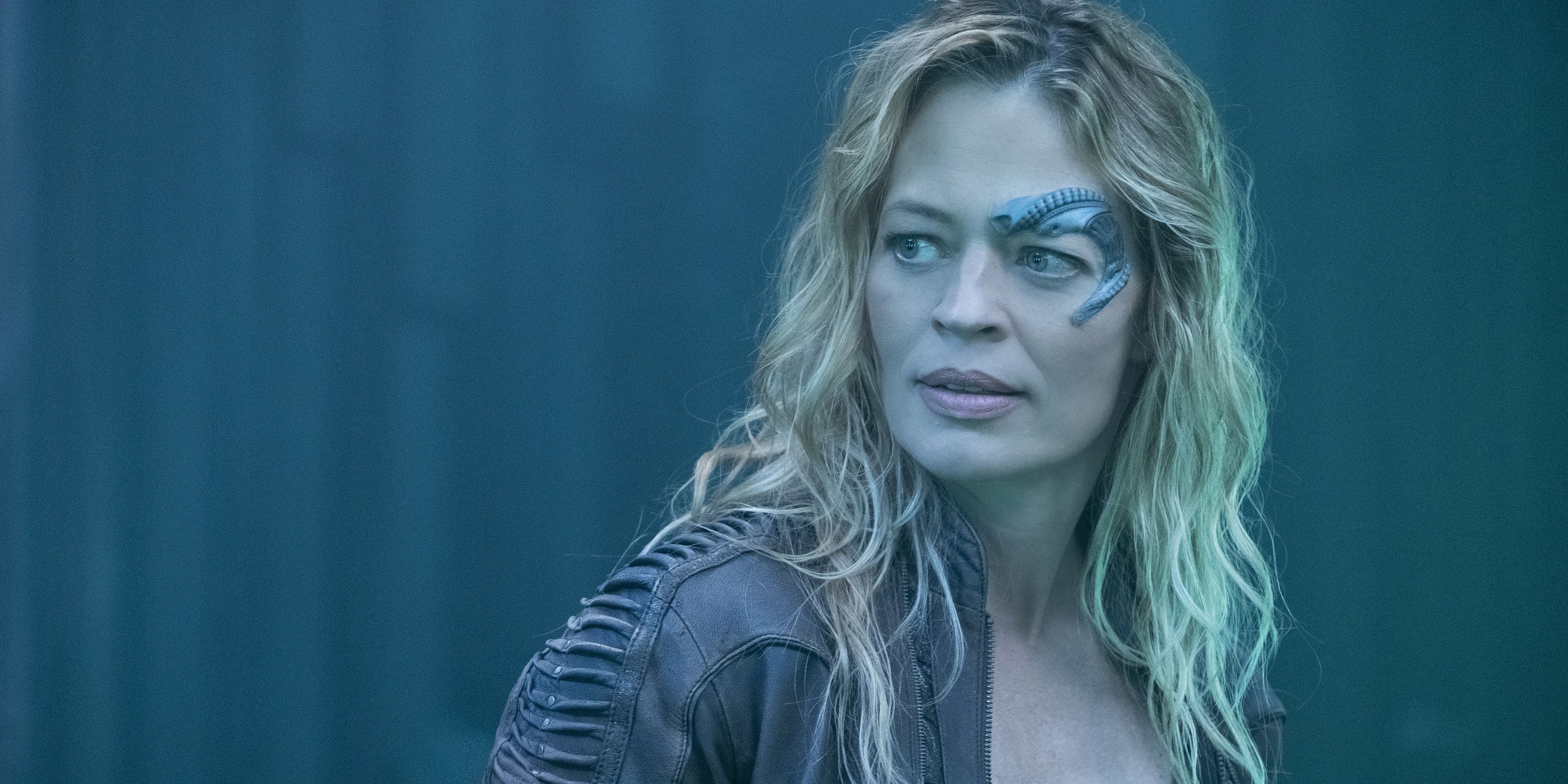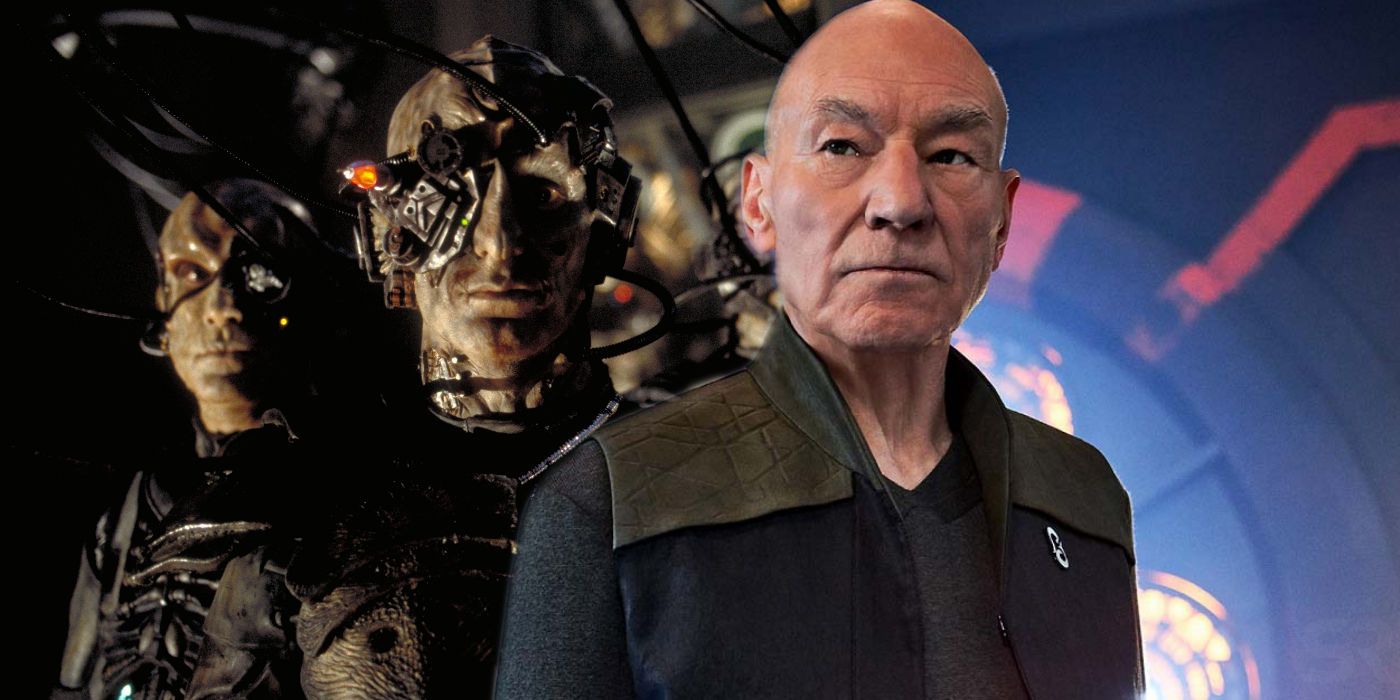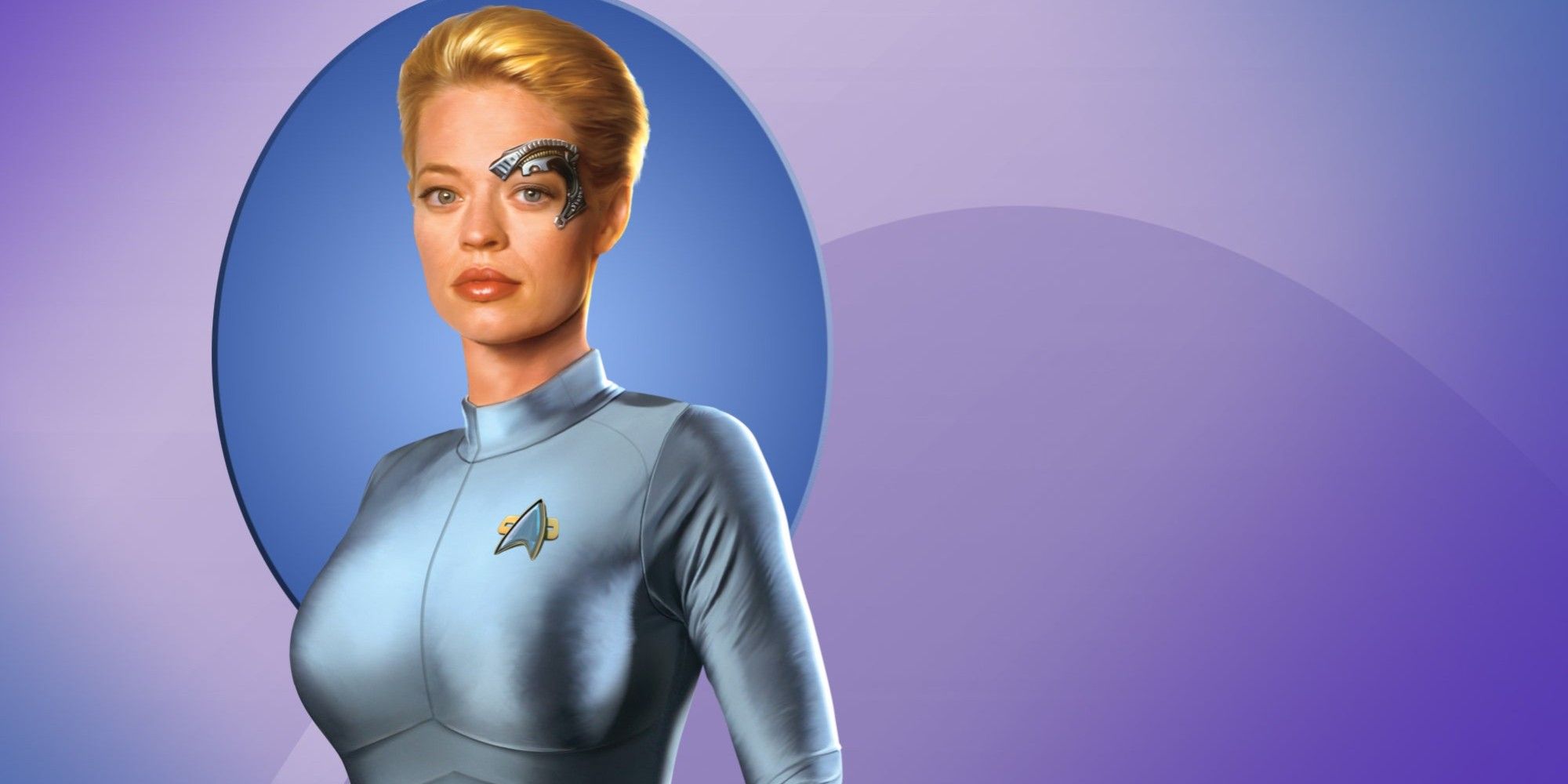When Seven of Nine appeared in Star Trek: Picard season 1, she had left her Voyager crewmates behind and was, instead, working for a vigilante organization known as the Fenris Rangers - and it's possible she joined them because she was rejected by Starfleet. While "going rogue" was not an illogical choice for Star Trek's first regular Borg character, it was surprising, considering that at the end of Star Trek: Voyager, Seven seemed poised to join Starfleet.
Over her four years on Star Trek: Voyager, Seven of Nine became more and more integrated with the crew. She formed friendships, essentially adopted several rescued Borg children, and even began a romance. Staying with the people who helped Seven begin reclaiming her humanity, and joining Starfleet in order to give something back to those people, seemed inevitable.
By the time Seven of Nine appeared again on-screen, in Star Trek: Picard episode 4, "Absolute Candor", everything had changed. She was working mostly alone as a member of the Fenris Rangers. She had apparently left her crewmates and friends far behind. She was even, as explained in "Stardust City Rag", sometimes using her human name, Annika, at least in intimate relationships. This was a woman who was different from the Seven of Nine last seen in Star Trek: Voyager's series finale, "Endgame", and it is likely that a rejection from Starfleet was the trigger that caused these changes.
What Happened To Seven of Nine After Star Trek: Voyager
By the time Voyager arrived home at the very end of the Star Trek: Voyager finale, the Federation was different than it was when Captain Janeway and her crew left the Alpha Quadrant. It was a society that had seen a second Borg incursion, one that threatened to undo all of Federation history. As well, Starfleet was still recovering from the Dominion War that was central to Star Trek: Deep Space Nine's latter seasons.
Similarly, Seven of Nine had evolved over the last half of Star Trek: Voyager's run. Initially encountered as a drone assigned to be Voyager's liaison with the Borg in the Delta quadrant, she was subsequently cut off from the collective, and encouraged to reclaim the human identity that had been stolen from her as a child. By the end of the show, she had strong friendships with the Doctor and the young Naomi Wildman; she had essentially adopted several rescued Borg children, including Icheb, whom she referred to as her son in Star Trek: Picard, and she had begun a romantic relationship with Commander Chakotay.
The choice to join the Fenris Rangers may seem out of character, but for someone like Seven of Nine, who has experienced abandonment many times over, it was not. She and Chakotay weren't a good match; their relationship came about quite abruptly and likely would've fizzled out once they were back in the Alpha quadrant, with many more romantic options for both of them. Seven of Nine's Borg children, except Icheb, had returned to their birth families. Icheb himself left Seven to join Starfleet, likely accepted as much because of his demonstrable intelligence and since he had no visible implants - so didn't "look Borg." Seven not only had an enhanced spinal column and bone structure, but required a Borg cortical node to survive. She also retained visible implants on her face and hand.
Details of how Seven spent the 20 years between the events of Star Trek: Voyager and her appearance in Star Trek: Picard are scarce. The events which have been shown, like her mercy-killing of Icheb, are closer to the latter series than the former. However, as a woman of action, a person who honors personal loyalty and ethics above institutions, and a free Borg in an increasingly xenophobic and anti-AI galaxy, it is likely that Starfleet rejected her, and set her on the path to vigilantism.
How Starfleet's History With Borg & Dominion Changed The Federation
Anti-Borg sentiment and xenophobia had both been increasing in the Federation since before Voyager got lost in the Delta quadrant. Starfleet saw one of their most respected captains, Jean-Luc Picard, assimilated in Star Trek: The Next Generation's "The Best of Both Worlds, Part I". He was restored to humanity – and his command - by the end of "The Best of Both Worlds, Part II", but he was never completely trusted after that. He was even sidelined during the second Borg incursion in the film Star Trek: First Contact.
At the same time Voyager was trying to get back home, the Federation was in the middle of a war against the Dominion, as depicted in Deep Space Nine. This war included shapeshifters masquerading as prominent officers and political leaders, as well as the expected space battles to protect individual worlds, and Deep Space Nine spent several episodes on the war itself, not to mention its repercussions. The heightened security and fear of dealing with doppelgangers that pervaded the Federation as a whole, and Starfleet, specifically, would not have dissipated quickly.
The increased use of artificial intelligence, like the Synthetics employed at Utopia Planitia in Star Trek: Picard, also heightened the concern that there would be an AI crisis. Indeed, such an event was hinted at in the Star Trek: Short Treks episode "Children of Mars". Star Trek: Picard explained that the Synthetics revolted and killed almost everyone on the planet, as well as making it uninhabitable.
The resulting ban on artificial life forms, of which the Borg are a part, was inevitable, but the prejudice against AIs wasn't new. Star Trek: The Next Generation's Commander Data had to go to court to establish his rights, and when he later created Lal (the first of his synthetic daughters), she was nearly taken away from him, because she was considered an asset, not a person. In a later episode, "I Borg", a rescued Borg drone was given a name (Hugh), and then (after the crew considered simply killing him) sent back home carrying lethal bits of code. This would never have happened with a completely organic lifeform. Indeed, in a similar story, when the rescued "villain" is a Romulan officer, Dr. Crusher does everything in her power to save the man.
Theory: Starfleet Rejected Seven of Nine
Given Seven of Nine's visible and permanent Borg components, it's possible she was rejected by Starfleet on the count of racism. However, Starfleet could have also argued that Seven was emotionally unstable. Unlike most drones, she had been assimilated as a child. By the final episode of Star Trek: Voyager, she was only beginning to come to terms with her humanity, and still had issues expressing her feelings. When she did display emotion, it was usually because of a technological problem, such as the Star Trek: Voyager season 5 episode "Infinite Regress", where encountering a Borg neural interlink frequency caused her to be overwhelmed by the personalities of people she had assimilated.
The combination of Seven of Nine's long-term existence as a drone, visible Borg components, technological vulnerability, and emotional volatility made her a risk Starfleet was likely unwilling to take on. The choice to join a vigilante group made sense after such a rejection, but Starfleet may not have been incorrect in their assessment. After all, in Star Trek: Picard episode 8, "Broken Pieces", she formed her own collective from the remaining, living XBs on the artifact Borg cube. While she did this to help Hugh (now devoid of implants and working to help people like himself) save Captain Picard, the final scene of Seven still attached to the Borg Queen's cell is chilling, especially as her voice joins the chorus of Borg saying, "Annika still has work to do."




